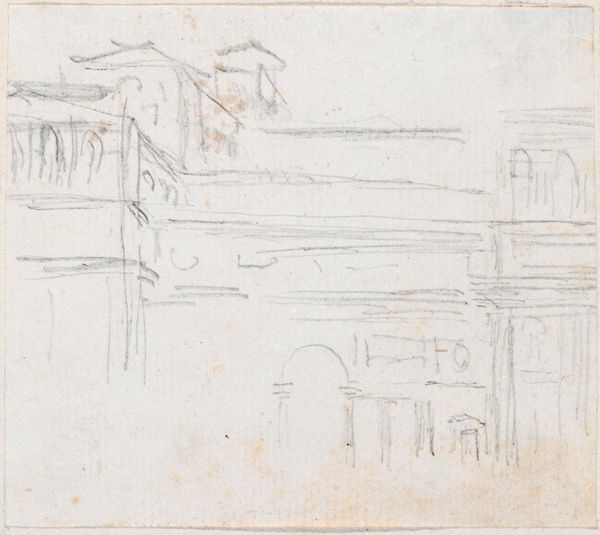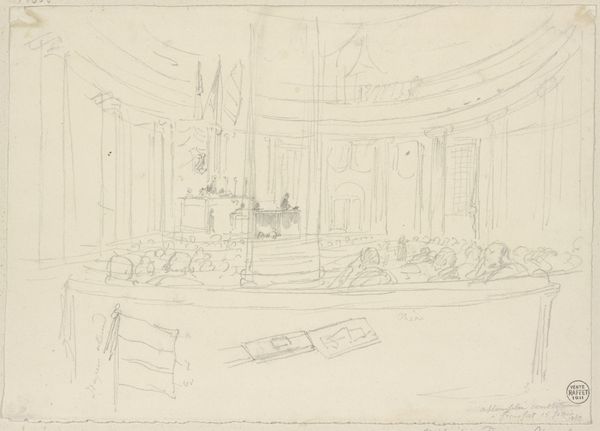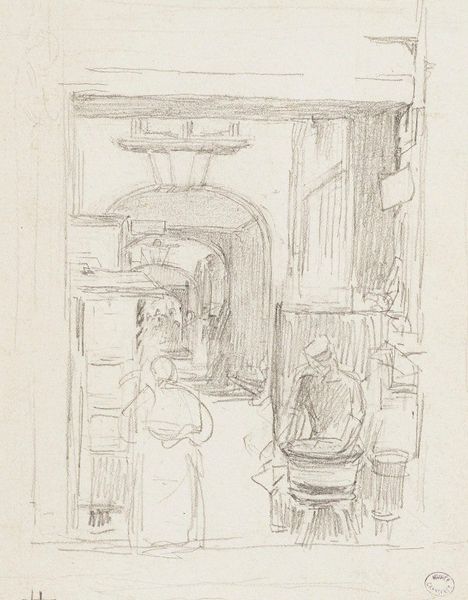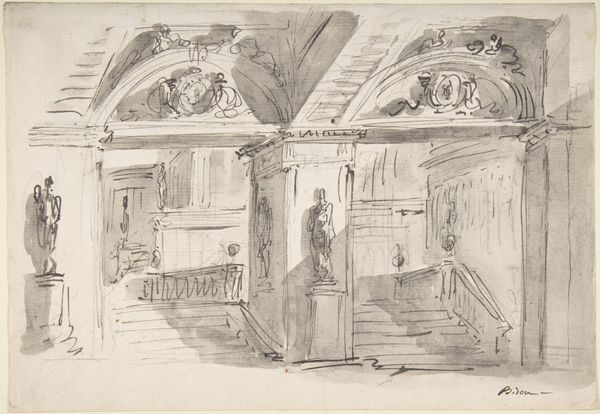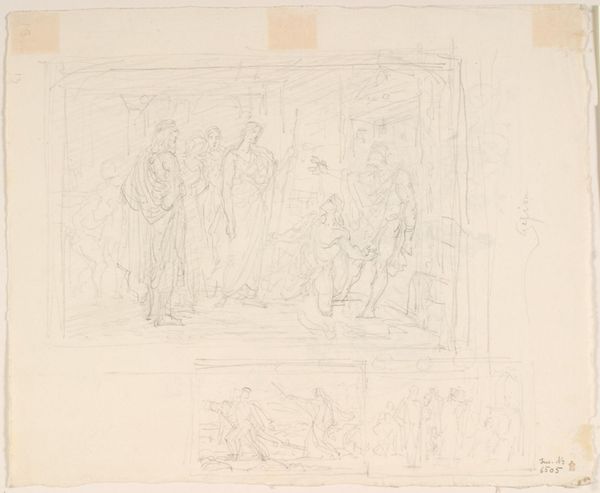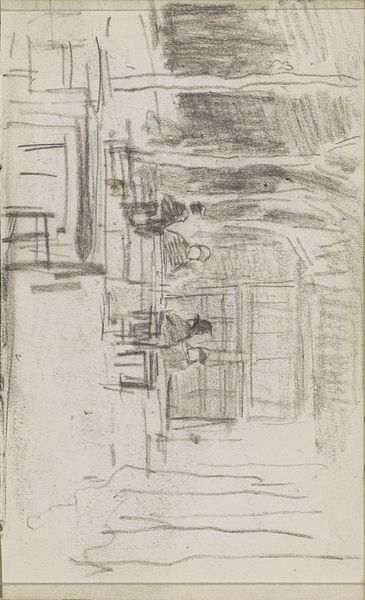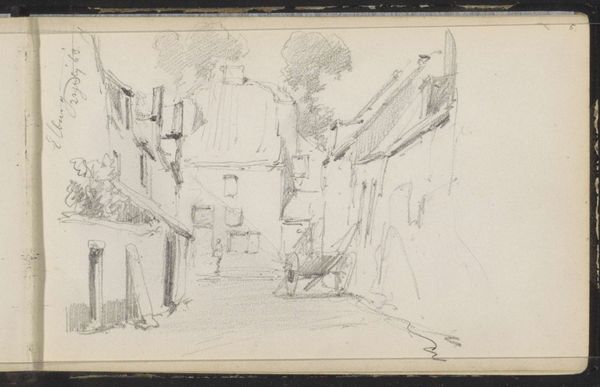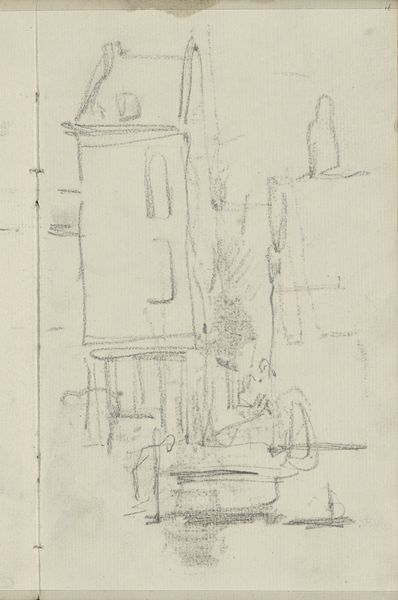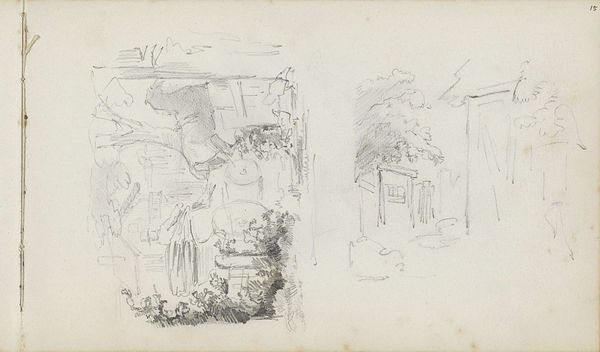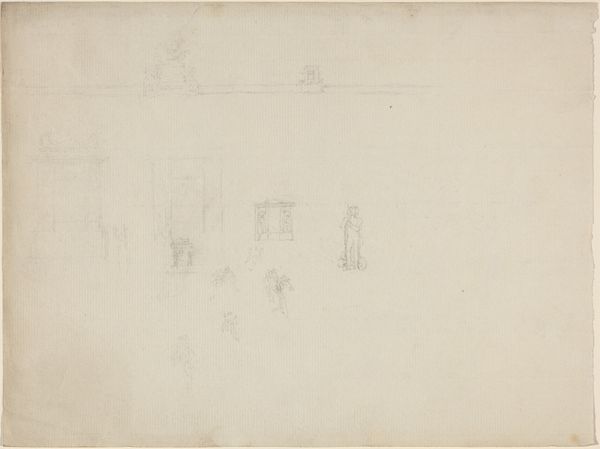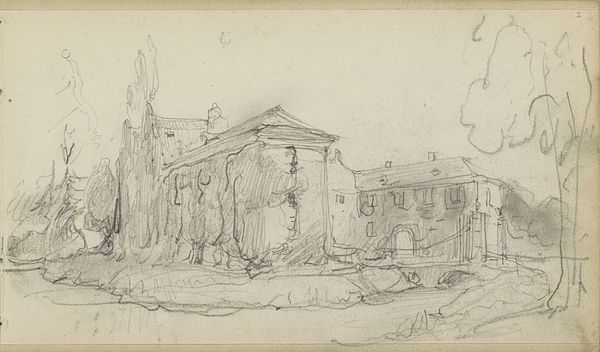
drawing
#
architectural sketch
#
drawing
#
amateur sketch
#
toned paper
#
light pencil work
#
pencil sketch
#
incomplete sketchy
#
personal sketchbook
#
sketchwork
#
detailed observational sketch
#
initial sketch
Copyright: Public Domain: Artvee
Editor: This is John Trumbull’s "Sketch for the Interior of the Maryland State House, Annapolis" from 1783. It’s a pencil drawing, and its loose quality gives it a very immediate feel. I'm struck by the grandeur it hints at, even in its unfinished state. What jumps out at you when you look at this, professor? Curator: What strikes me is the role of civic architecture during the Early Republic. Consider this: Trumbull, better known for his history paintings idealizing the American Revolution, here engages with the actual spaces where that history was being shaped. This sketch isn't just about the Maryland State House; it's about the *idea* of a state house. How does its classical architectural vocabulary project power, stability, and aspiration in a newly formed nation? Editor: That’s fascinating. So, you're saying the choice of style is a deliberate message? The columns and domes… Curator: Precisely! It deliberately evokes ancient Greece and Rome. What were these societies famous for, and how might the founding fathers of the USA be hoping to connect with their legacy? Editor: They were, like, the birthplaces of democracy and republics… so this building isn't just a functional space, but a symbolic statement about America's aspirations to emulate those ideals? Curator: Exactly. This building, like its sketch, announces the civic ambitions of the American project. What do you notice about the placement of people? What might they represent, symbolically? Editor: Well, there are not many of them, which is maybe suggesting they aren’t the most important aspect? Curator: It’s a sketch; there are several potential explanations, yet I would encourage you to also analyze how this architectural style has historically been utilized and interpreted across varied communities, specifically reflecting on its cultural importance for specific segments of society, while noting that the symbolic statement behind the architecture has varied effects. Editor: It’s like the building speaks louder than the people who inhabit it. I hadn't considered architecture as a form of political communication before, so that’s made me think. Thanks! Curator: My pleasure. Recognizing the relationship between art and political culture provides insight into both.
Comments
No comments
Be the first to comment and join the conversation on the ultimate creative platform.

